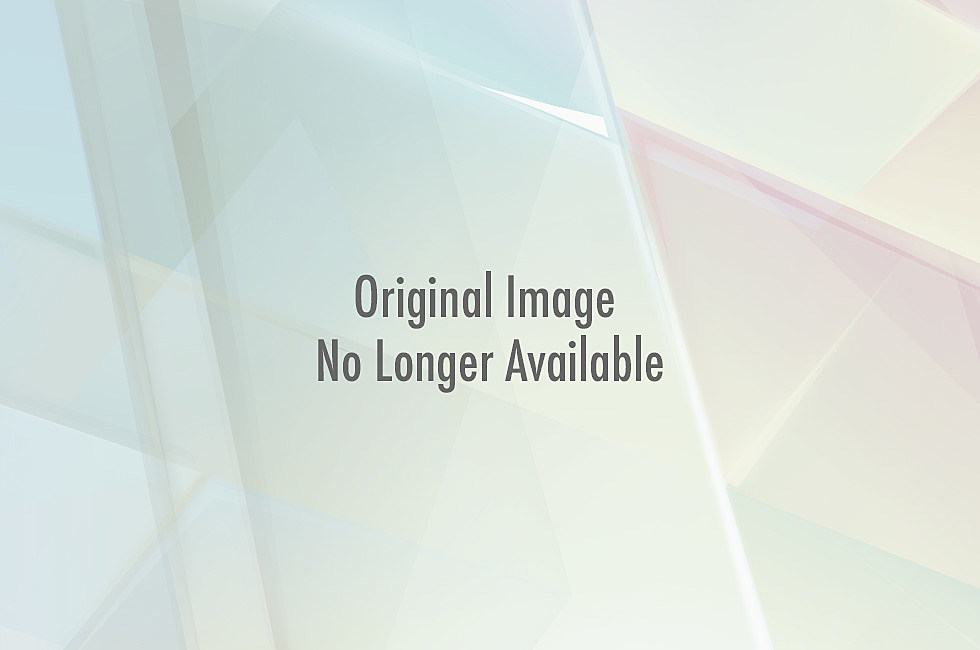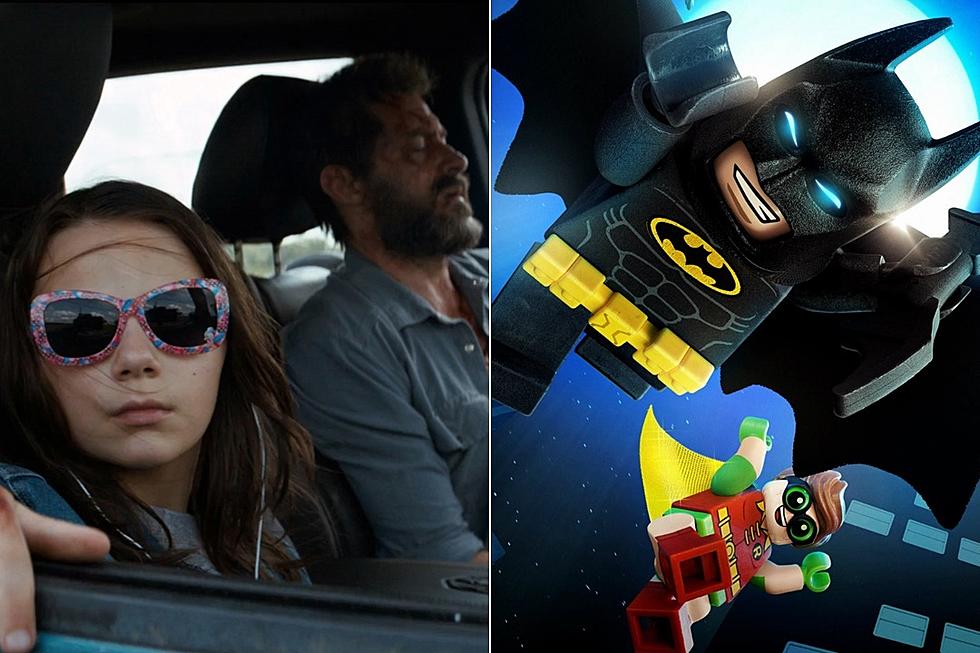![Marvel and Barnes & Noble Bring Graphic Novels to the Nook [Review]](http://townsquare.media/site/622/files/2011/11/marvelnook.jpg?w=980&q=75)
Marvel and Barnes & Noble Bring Graphic Novels to the Nook [Review]

Whether comic book publishers and retailers are ready to admit it or not, a robust digital subscription service is the industry's only hope of retaining a sustainable base of consumers that purchase serialized content. Comics, like other forms of art, are a medium that will never go the way of the dinosaur, even if they someday go the way of poetry. The comics industry, however, is similar to other entertainment markets in that it needs to tailor its distribution system in order to reach a diverse, and often changing, group of customers.
It makes sense that Marvel Comics is partnering with Barnes & Noble to offer what the company says is the largest collection of its titles on any tablet device. With Amazon touting that millions of Kindle devices sold during the holiday season and that earlier in the year it sold more eBooks than printed editions, Marvel is smart to try and convert some of those B&N customers into Marvel fans with the Nook Tablet.
Keep reading to find out how well the new device presents Marvel material and whether it's worth checking out for yourself.The Good
To start, at around $250 the Nook Tablet is about $50 more than Amazon's Kindle Fire, but has twice the storage space, faster processing capabilities, and a longer battery life. Plus, running off Android software, the B&N device looks more like a true tablet than a simple eReader. The latest Nook is almost as smooth of a user experience as working with an iPad. Compared to the iPad, the new Nook is noticeably smaller and less all-purpose, yet still a competitive piece of technology at about half the price of Apple's device. Additionally, B&N, unlike Apple, isn't being investigated by the U.S. Department of Justice for their eBook practices. At least not yet, anyway.
The screen resolution of the Nook Tablet is standard when compared to the Kindle Fire, but it's a high bar that was set at 1024 x 600, making the tablet's built-in Netflix application shockingly crisp; even most YouTube videos exceeded expectations. (Read more about technical specifications on Ars Technica.)
Websites load fairly quickly on the Nook and look as good as they would on your laptop or desktop. Employing the "pinch" and "swipe" finger-navigation system, it's easy to pull up a browser, switch to reading a book, or launch an application quickly when using the Nook.

[Marvel's Ryan Penagos shows off his device.]
The device powers down and starts up nicely, and doesn't take too long to charge. The backside speakers aren't anything to brag about, but are decent given the Nook's size.
Marvel is offering some of its best titles in the B&N store with books like Ed Brubaker and Steve Epting's Captain America run, Mark Millar and Steve McNiven's epic crossover Civil War, Matt Fraction and Salvador Larroca's fast-paced take on The Invincible Iron Man, and many more. My personal favorites were The Wonderful Wizard of Oz (Skottie Young's art and Jean-Francious Beauliue's colors burst from the bright screen) and Joss Whedon and John Cassady's Astonishing X-Men series.
Prices on single graphic novels range from around $7 to $10, which is certainly not bad compared to brand-new print release prices. However, experienced comics fans probably know of other places, either online sales or local comic shop discounts, where some of the titles in the B&N store can be purchased in print for less.
The Bad
While the Nook says it has 16GB of storage, which seems nice compared to the 8GB of storage on the Kindle, it comes at a very heavy price. The Kindle only really allows for 6GB of storage, but the Nook is even more misleading. Out of the real 13GB available on the Nook, 12GB is reserved for B&N content only. For those not wanting to any math, that leaves you with 1GB for uploading your own content, and that's bull$^*#.
Imagine if you bought an 8GB iPod, but 7GB was reserved for songs that had to be purchased in the iTunes Store. It sets a terrible precedent for distribution companies looking to partner with technology producers, and makes it seem as if B&N isn't serious about longevity in the device market. Luckily for all of us, there are smart people with free time who can show you how to crack the device to open up some more features.

The only redeeming part of the storage space on the Nook is that it comes with space for a 32GB memory card. Still, that adds another $30 to $40 to the total price if you're looking to upload even a small portion of your entertainment files. Most of the Marvel Comics trades from the B&N store are around 80MB, so there's plenty of room for hours of reading, but definitely not an unlimited amount.
Although the screen resolution is very nice, the screen size is too small to read most comics like you would a floppy or trade paperback. Comics are still drawn and designed for a very specific page size, and shrinking it down doesn't work very well. The iPad is actually the perfect size to read digital comics, but the smaller Nook and Kindle Fire make it necessary for the reader to zoom-in to catch text-dense word balloons.
I was puzzled to find that searching for Marvel comics was a difficult task on the Nook. Instead of having linkable or feature publisher menu, I eventually had to search for "Marvel Enterprises Inc" to find all of the comics I wanted to check out. It wouldn't make sense to have a featured publisher section for everyone, but with as much both companies seem to be hyping the partnership, I would have thought Marvel comics would be somehow easier to browse. To the B&N store's credit, a recommend list of titles is available in a book's info section if you're looking to purchase a subsequent volume.
Should I Buy It?
If you're looking for an iPad for entertainment purposes only, and wanting to save around $200, then yes. The Nook Tablet is light-weight, easy to use device that looks and feels great. You'll probably want to spring for the 32GB memory card, as that single gigabyte of space is shamefully too little.
Overall, reading Marvel comics on the Nook Tablet was a very pleasant experience, but it still wasn't as enjoyable as reading a physical book. Wanting to see a full comic page all at once, I would strain my eyes to read word ballons without having to zoom-in.
Titles like Astonishing X-Men and The Wonderful World of Oz were fine to read in the single-page because of their limited dialogue and larger lettering, but get into something Brain Michael Bendis-penned and it's game over, man.
Zooming-in on the pages tended to distract from the art (which otherwise looked fantastic) and caused me to notice that the files were rather low in quality. If nearly all of the device's storage space is only going to be for proprietary content, then I'd like to be able to see the brush-strokes on comic pages if I so choose. Turning the device horizontally for the double-page view made zooming-in a bit nicer, but still not entirely comfortable.
The somewhat awkward reading position readers may find themselves in isn't B&N's issue though - it's Marvel's. Turning pages, going back to your library of material, and generally getting around inside the Nook was comfortable. The issue is that no one seems to be designing comics with the digital space in mind.

The pace of comics is set by a variety of factors, but most important is panel layout. Updating older material into the digital space would likely take far too long if someone had to isolate each panel of the thousands and thousands of single issues Marvel has published over decades. But it would be great to see new titles designed in a way that each panel could be framed nicely alone on the screen, in addition to having a the ability for single-page or double-page layout and zooming functions. Perhaps someday we'll see digital comics offered in the same manner as print material, one at lower quality and price point, and one that gives a more polished experience.
Until the industry decides to start designing intelligently for digital comics, Marvel's offering on the Nook Tablet is still some of the best available, even if falling a little short. You can read other comics on Nook besides Marvel, like titles from Devil's Due. The problem is that you probably don't want to read most of them outside some older Hack/Slash issues. IDW recently announced some of their titles are on device, offering some number one volumes for under $5, which what looks to be similar reading experience.
How the Nook factors into the digital comics market is uncertain at this point. Last year CA's David Brothers did a great piece on how digital readers are different from comic shop readers, and recently reminded us that downloads do not equal sales. It will likely be another year before enough data is available to project how digital comics will directly impact the wider industry, but a large selection of Marvel graphic novels on the B&N device is a telling step in which direction we could be heading.
If you're a die-hard Marvel reader with a few hundred bucks to spend, and especially if you're looking to travel with a good amount of comic material, the Nook Tablet might be a good purchase for you in 2012. Plus, cleanly designed websites like Achewood.com look great in the browser, giving you even more potential reading in the wide and wonderful world of webcomics.
More From ComicsAlliance



![The Boys Are Back in Town With Marvel Legends’ New Guardians of the Galaxy Figures [Review]](http://townsquare.media/site/622/files/2017/03/IMG_2839.jpg?w=980&q=75)





